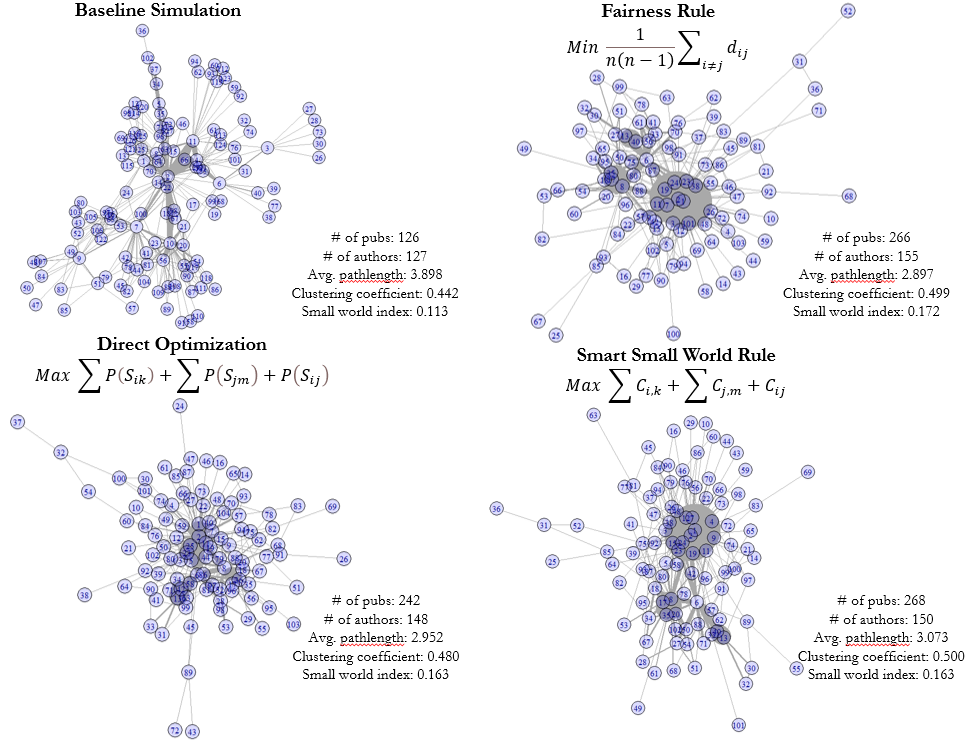Who to Fund? Identifying Strategic Collaborations & Stimulative Policies for Dynamic Research Networks
Abstract
Black liquor is a by-product of papermaking. It supplies close to 2.1% of the US electricity from boilers; and this doubles if black liquor is gasified. Like many specialized bioenergy research communities, this research community is also small. Our data comprises the near universe of published work on Black Liquor Gasification at papermills, including information on all authors and funding that supported a given publication. We represent all collaborations as a social network to compare alternative funding strategies. One allocates funds to the most productive pairs. Others fund pairs that tighten overall network connectivity.
Using limited dependent variable methods, we estimate the number of publications and the entry or exit of active researchers within the network. We simulate each funding strategy over five cycles and update the network to create an outcome distribution. Direct Optimization funds coauthorship pairs expected to generate the highest expected number of publications. This increases expected publications by 92% and active researchers by 28%. Smart Small World funds pairs that create the largest number of researchers within one degree of separation. This strategy increases publications by 114% and adds 31% more researchers. Finally, a Fairness Rule minimizes overall pathlength, and increases publications by 111% and active researchers by 37%. Overall, this experiment suggests that research funding that strengthens overall research community connectivity generates the highest levels of research productivity and network connectedness.
